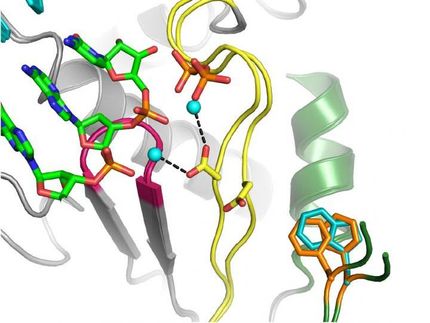Building a better Rift Valley fever vaccine
University of Texas Medical Branch researchers have significantly improved an existing experimental vaccine for Rift Valley Fever virus, making possible the development of a more effective defense against the dangerous mosquito-borne pathogen.
"If Rift Valley fever virus were introduced to the U.S. or Europe, it would be a very scary situation," said UTMB assistant professor and Sealy Center for Vaccine Development member Tetsuro Ikegami, lead author of a paper on the vaccine work now online in the Journal of Virology. "To be ready to respond, we want a vaccine that can raise immune response very quickly in large animals and health workers. We also want a vaccine that will allow us to differentiate between infected and vaccinated animals."
Ikegami's first requirement — quick response — dictated the use of a so-called "live attenuated vaccine." A live attenuated vaccine is a strain of virus that has been weakened to harmlessness, but still has the ability to reproduce and provoke a robust immune response. Such vaccines often require only a single injection, increasing speed and convenience of administration.
A live attenuated vaccine for Rift Valley Fever virus already exists, a strain called MP-12. MP-12 produces a strong immune response in humans and livestock, but human safety trials of the vaccine have never been completed. Practical application of MP-12 faces other obstacles as well. For one thing, researchers worry that the vaccine retains a small amount of residual virulence. For another, they're concerned that the antibodies MP-12 evokes are identical to those produced in response to infection by full-strength Rift Valley fever virus. In an outbreak, public health officials would be unable to tell animals vaccinated with MP-12 from naturally infected ones, making it impossible for them to map the epidemic's spread and respond effectively.
To resolve these issues, Ikegami and his colleagues went to work on MP-12's genome, focusing on a segment designated NSs. When a Rift Valley fever virus enters a cell, NSs produces proteins that function like saboteurs. They attack two of the cell's key defense systems: the genetic mechanism that generates the antiviral protein interferon beta, and a protein called PKR, which suppresses viral protein production.
"We removed the NSs gene because we thought it would attenuate MP-12 further, and it would make it easy to differentiate infected from vaccinated animals — MP-12 without NSs wouldn't produce any anti-NSs antibody, thus giving a different antibody response from wild-type Rift Valley fever virus," Ikegami said.
Experiments with mice exposed to Rift Valley fever virus in UTMB's Robert E. Shope, MD Biosafety Level 4 Laboratory confirmed that the NSs-less strain remained a highly effective vaccine. But Ikegami was not satisfied.
"The neutralizing antibody response was slightly decreased, and I thought we could do better if we retained some of the function of the NSs," he said. To do this, the team introduced a gene for a "dominant negative PKR" — a molecule that would interfere with the cell-defending PKR protein, allowing the vaccine virus to multiply more freely. When they tested the new vaccine strain in mice, they found that it actually protected the animals better than MP-12.
"We got really good efficacy in mice, and we're hoping it will translate well to large animals," Ikegami said. "This has been a very successful project, with some great teamwork and major contributions from two postdocs, Olga Lihoradova and Birte Kalveram."





















































